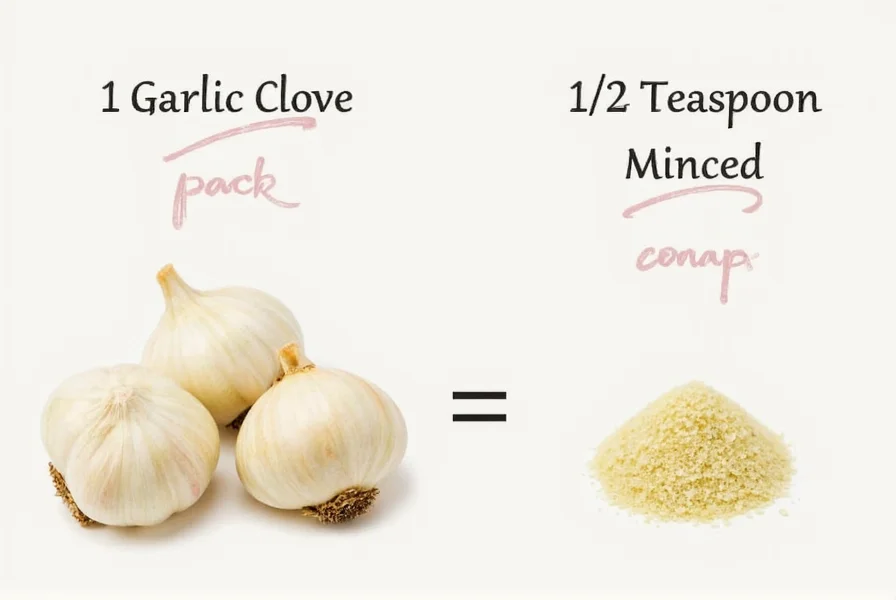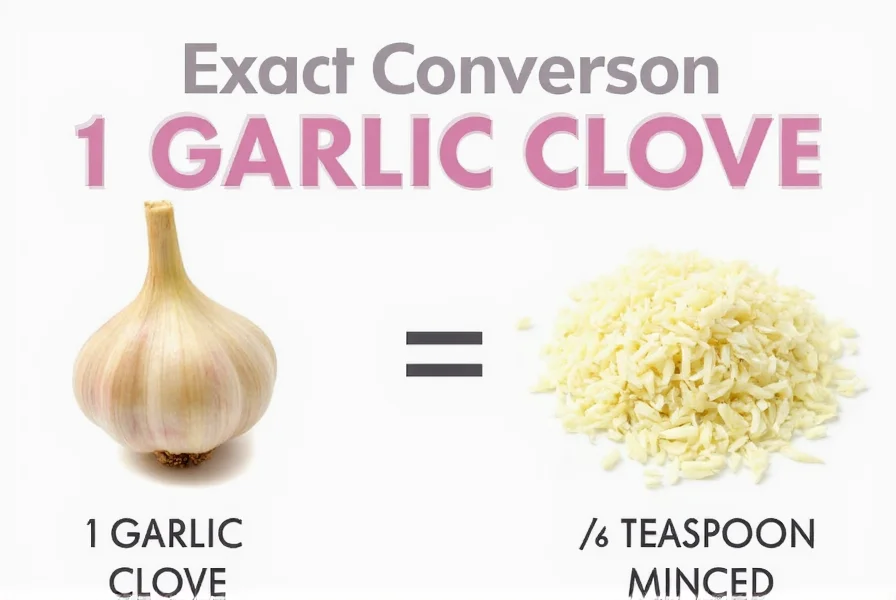Understanding garlic measurements is essential for precise cooking and recipe execution. Many recipes specify garlic in teaspoons rather than cloves, creating confusion for home cooks who have whole garlic bulbs on hand. This guide provides accurate conversions and practical tips for measuring garlic in your kitchen.
Why Garlic Measurement Conversions Matter
Garlic's potent flavor can make or break a dish. Too little leaves recipes lacking depth, while too much overwhelms other ingredients. Knowing how many teaspoons in one garlic clove ensures consistent results whether you're following a professional recipe or adapting family favorites.
The variation in garlic clove sizes complicates direct conversions. A single bulb might contain cloves ranging from tiny to jumbo, each yielding different volumes when prepared. This explains why recipes increasingly specify measurements by volume rather than count.
Garlic Clove Size Variations and Their Measurements
Garlic cloves fall into three primary size categories, each with distinct volume yields:
| Garlic Clove Size | Minced Garlic Yield | Garlic Paste (Pressed) Yield |
|---|---|---|
| Small (1 inch long) | 1/4 teaspoon | 1/8 teaspoon |
| Medium (1-1.5 inches) | 1/2 teaspoon | 1/4 teaspoon |
| Large (1.5+ inches) | 3/4-1 teaspoon | 1/2 teaspoon |
This garlic clove to teaspoon conversion chart helps standardize your cooking. When recipes call for "2 cloves of garlic," you'll know to use approximately 1 teaspoon of minced garlic for medium-sized cloves.

Factors Affecting Garlic Volume Measurements
Several variables influence the final volume when converting cloves to teaspoons:
- Preparation method - Minced garlic takes up more space than pressed paste
- Clove moisture content - Fresher garlic yields slightly more volume
- Chopping technique - Finely minced versus roughly chopped affects density
- Garlic variety - Some cultivars have higher water content than others
For the most accurate garlic measurement substitution in recipes, consider your preparation method. Recipes specifying "minced garlic" require different volumes than those calling for "garlic paste" or "garlic puree."
Practical Kitchen Applications
When adapting recipes, use these guidelines for perfect garlic measurements:
- For most standard recipes, assume medium cloves unless specified otherwise
- When precision matters (like in sauces or dressings), measure after preparation
- Remember that roasted garlic yields less volume than raw due to moisture loss
- Store-bought minced garlic often contains preservatives that affect flavor intensity
Understanding the garlic clove size to teaspoon ratio prevents common cooking mistakes. Many home chefs accidentally double garlic quantities by misunderstanding that "1 clove" doesn't equal "1 teaspoon."

When Precision Matters Most
Certain dishes require exact garlic measurements for balanced flavor:
- Delicate sauces and dressings
- Garlic-infused oils
- Marinades with short contact time
- Raw preparations like aioli or salsa verde
In these cases, measuring your minced garlic measurement equivalents ensures professional results. For heartier dishes like stews or roasts, approximate measurements usually suffice.
Common Measurement Mistakes to Avoid
Cooks frequently make these errors with garlic measurements:
- Assuming all cloves yield the same volume
- Using tablespoon measurements when recipes specify teaspoons
- Not accounting for preparation method differences
- Measuring whole cloves instead of prepared garlic
Remember that the question how much minced garlic equals one clove has no single answer—it depends on multiple factors as shown in our conversion chart.
FAQ: Garlic Measurement Questions
How many garlic cloves equal 1 teaspoon of minced garlic?
One medium garlic clove typically yields about 1/2 teaspoon of minced garlic, so two medium cloves equal approximately 1 teaspoon. Small cloves may require three to reach 1 teaspoon, while large cloves might need only one and a half.
Can I substitute jarred minced garlic for fresh cloves?
Yes, but adjust quantities. Jarred minced garlic often contains preservatives and has a milder flavor. Use 1:1.5 ratio—1 teaspoon jarred for every 1.5 teaspoons fresh minced. Always taste and adjust as jarred products vary by brand.
Does roasting garlic change the teaspoon measurement?
Yes, roasting reduces garlic's volume by about 25% due to moisture loss. A roasted medium clove yields approximately 3/8 teaspoon instead of the raw 1/2 teaspoon. Account for this when substituting in recipes.
How much dried garlic equals one fresh clove?
Use 1/8 teaspoon garlic powder or 1/4 teaspoon garlic flakes to replace one medium fresh clove. Dried garlic has more concentrated flavor, so start with less and adjust to taste.
Why do recipe measurements for garlic vary so much?
Garlic measurements vary due to differences in clove size, preparation methods, and regional growing conditions. Professional recipes increasingly specify by weight (grams) for precision, but teaspoon measurements remain common in home cooking for accessibility.










 浙公网安备
33010002000092号
浙公网安备
33010002000092号 浙B2-20120091-4
浙B2-20120091-4